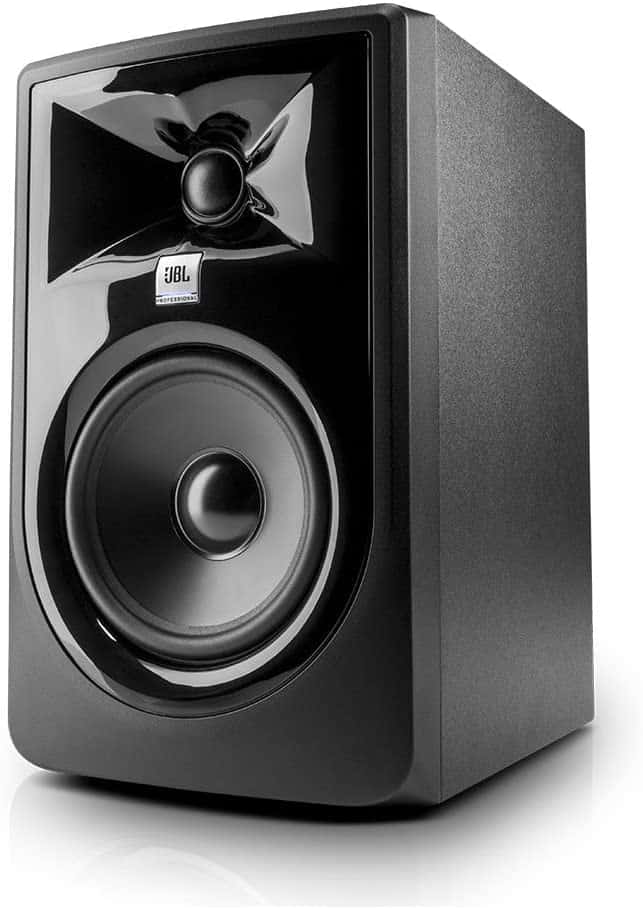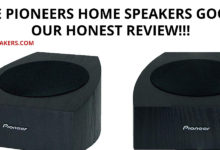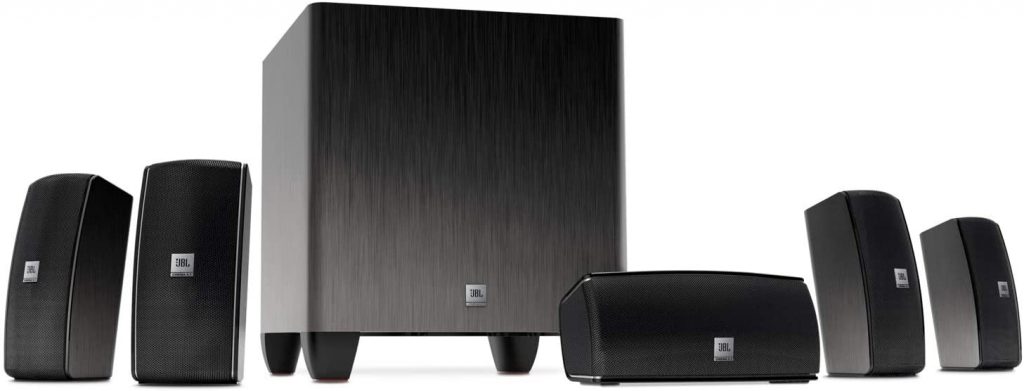Over time, there have been misconceptions about the difference between studio monitors vs Home speakers. Well, all that ends now as that’s what we tackle here.
Of course, at one level, you can use any old speakers as monitors, nearfield or otherwise, but whatever you use, you can guarantee one thing: the characteristics and idiosyncrasies of your chosen monitors will color the sound of everything you record and mix.
And if you’ve used speakers that demonstrate extremes, they may well leave the results of all your efforts sounding far from as intended when your music is played back on any other system.
Wharfedale Diamond 8.2. So monitoring is a vital part of the recording chain — but that doesn’t answer the hi-fi speaker’s question. Even at the end of this two-part feature, the answer is likely to be a shade of grey rather than black or white.
But through technical analysis and investigation of four speakers — two that carry the ‘hi-fi’ label and two the ‘pro’ — I’m going to try and discover a little about the typical differences between them. And perhaps that question won’t then be quite so hard to answer.
Dynaudio BM5. The four quiverings, apprehensive guinea-pig speakers are, in the ‘hi-fi’ corner, the B&W DM303 and Wharfedale Diamond 8.2, and, in the ‘pro’ corner, the Dynaudio BM5 and the KRK K‑Rok.
Both the B&W and the Wharfedale were launched recently, and both have been pretty well-reviewed in the hi-fi press and very widely distributed.
The Dynaudio and KRK have been established in the market for much longer (and indeed both have been reviewed in Sound On Sound before — see KRK SOS June 1995 and Dynaudio SOS June 1996 respectively).
KRK K‑Rok. The longer-established nature of the ‘pro’ models perhaps reflects the less rapid turnover of new models in the ‘pro’ sector, and are, similarly, widely used products from well-respected manufacturers. In fact, there are some strong similarities between all four.
They’re all of a similar physical size and are all passive two-way systems. They all feature 6.5-inch bass/mid drivers and one-inch dome tweeters.
And they all use reflex bass loading, a design technique used to increase the perceived amount of bass a speaker can produce (for more on this, see part one of my previous article on loudspeakers in SOS October 2000 issue).
However, there’s one significant difference between our guinea pigs — price. The ‘hi-fi’ speakers will set you back around half the cost of the ‘pro’ monitors. Perhaps this explains why the nearfield question comes up so regularly in the SOS Forum?
Table of Contents
- 1 Studio Monitors Vs Home Speakers
- 2 What Makes A Good Studio Monitor?
- 3 Distinct Differences Between Studio Monitors And Home Speakers
- 4 What’s the difference between active and passive speakers?
- 5 What does near field mean?
- 6 So can you use regular speakers as studio monitors?
- 7 Can you use studio monitors for home/hi-fi use?
Studio Monitors Vs Home Speakers
What Makes A Good Studio Monitor?
The archetypal studio nearfield monitor, Yamaha’s NS10M, is well known to have (put politely) a ‘characterful’ tonal balance.
The general consensus seems to be that it is uneven through the mid-range and too bright at the top (hence the commonly employed trick of hanging tissue paper over the tweeters to calm it down).
So if the Yamaha’s balance is questionable, what should we be looking for in the perceived tonal balance of a nearfield monitor?
In two words, we should be looking for the ‘neutral average’ — neither too bright nor too dull. If the aspirations we have for our work are that it should sound tonally acceptable on the widest range of systems out there, from hi-fi systems costing many thousands to AM radio (or its low-bit-rate MP3 equivalent).
Then the perceived tonal balance of our nearfield monitor, which will be used up close and probably with its back to the wall, should be as close to the ‘population average’ as possible.
The same is probably true of a hi-fi speaker because, in balance terms, the hi-fi speaker is nothing but a monitor that’s used a few stages down the line (ie. by the consumer of the music you’re mixing).
A neutral tonal balance, however, is not the same thing as a flat axial frequency response — this is a common mistake. The perceived tonal balance of a speaker is the combination of the direct sound from the drivers and reflected sound from nearby surfaces, and, as speakers are directional devices (especially at high frequencies), a flat axial frequency response doesn’t mean that a loudspeaker will necessarily sound that way.
But we can work backward, and predict generally how the axial response might look for different types of loudspeakers if they are to sound neutral.
Firstly, a hi-fi speaker that’s positioned perhaps four meters away from the listener and is mounted a little away from the wall on a floor stand should have a subtly different response shape compared to a nearfield monitor that’s maybe one to two meters away and mounted on a wall.
Where the nearfield should demonstrate a slightly up-shelved response at a few hundred Hertz combined with a slow roll-off at either frequency extreme, the hi-fi speaker, unless it has been specifically balanced for use against a wall, should probably be closer to flat.
Secondly, if a nearfield monitor is to be used in a small room, where strong reflections from the side walls will reach the ear within a few milliseconds, the shape of the horizontal off-axis response is vital too.
Wild variations between on and off-axis responses are well-known to result in perceived tonal imbalances, so if the monitor is not to sound unnaturally colored, its off-axis response should be as close to a gently down-tilted version of the axial response as possible.
This is one very good reason why landscape-mounted nearfield monitors tend to be a bad idea — the horizontal off-axis response from laterally adjacent drivers will almost certainly display major discontinuities through the region where the drivers’ outputs overlap.
Distinct Differences Between Studio Monitors And Home Speakers
- Active/passive – studio monitors tend to be active i.e. they have built-in power amplifiers. Hi-fi and other home speakers are generally passive, receiving power from a dedicated standalone amplifier.
- Individual power amplifiers – with active speakers, particularly studio monitors, you tend to have multiple power amps in one unit. This means that woofer (bass), midrange, and tweeter (treble) cones are each powered individually, making for a more precise sound.
- Crossovers – an extension of the previous point, a crossover splits frequencies to ensure they go to the right driver (speaker). This again adds clarity and precision, so that you can hear every detail across the EQ range.
- Sound – kinda covered in the points above, but studio monitors are designed to have a flat, precise sound for nearfield use. This means they don’t emphasize any one frequency, giving you the most accurate impression of your mix so you can easily pick out imperfections.
What’s the difference between active and passive speakers?
We might be stating the obvious, but:
- Active means it’s powered
- Passive means it requires external power
In the case of studio monitors, most are active. You can tell this by the mains connections that they have on the back. Passive speakers tend to accept power via their audio input connections.
These will usually come straight from a central amplifier; the same principle applies to guitar heads and cabinets.
What does near field mean?
You’ll often hear or see the term nearfield with reference to studio monitors. Heck, we used just a minute ago. So what does it mean?
In the simplest terms, nearfield means close to the user/listener. By close, we mean a few feet away, giving you a clear, immediate sound. This prevents you from hearing natural reverberations, so you get a precise, upfront impression of your mix.
What’s the opposite of nearfield? Good question, reader. You’ll also see mid-field and far-field, which more or less mean what you think they’d mean. Mid-field generally means a few metres away, while far-field is non-directional, aimed to fill a room.
Standard hi-fi speakers could be considered far-field, as they’re designed to sound good in any room and from any direction (within reason).
So can you use regular speakers as studio monitors?
It’s generally favourable to use studio monitors if you’re recording, mixing or mastering. As mentioned earlier, you simply get a more accurate sound.
If you’re using regular speakers, you may miss some detail in the sound which could lead to an imbalanced mix.
Having said that, you will sometimes spot home speakers in studio setups. The notorious Yamaha NS10 speakers (below) were released in the ‘70s to the home audio market.
They didn’t go down well but instead garnered a cult following among producers and engineers. It was favored for its ability to bring out inconsistencies and sonic blemishes, an invaluable trait in the mixing process.
It’s still used to this day, and Yamaha has released several similar iterations purely intended for studio use.
Long story short: home speakers aren’t bad at all, but they certainly aren’t accurate. If you want a fool proof mix, stick to studio monitors!
Can you use studio monitors for home/hi-fi use?
If you flip the question on its head, the answer isn’t that dissimilar. Studio monitors, particular nearfield, are designed to sound good from a specific distance and perspective. If you move around in front of a studio monitor, you’ll notice the sound will change quite a bit.
Conclusion
Of course, at this point any misconception you may have had is clear as day. Studio monitors and home speakers perform some distinct functions that are overlooked by the untrained eye but this text has helped with your “training.”






